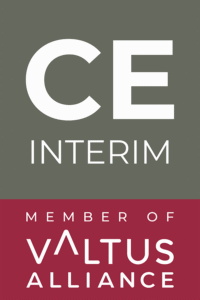Nie masz czasu na przeczytanie całego artykułu? Posłuchaj podsumowania w 2 minuty.
Jeśli planujesz rozszerzyć produkcję w Bułgarii lub rozbudować zakład przemysłowy, największym wyzwaniem nie będą pozwolenia czy maszyny.
To będą ludzie.
Nawet w kraju z jednymi z Najniższe koszty pracy w UE, gra o talenty staje się coraz trudniejsza. A dla zachodnich dyrektorów finansowych, dyrektorów operacyjnych i dyrektorów ds. zarządzania relacjami z klientami, którzy w 2025 r. będą spoglądać na Bułgarię, sukces będzie zależeć od tego, jak dobrze poradzisz sobie z zatrudnianie krajobrazu-Region po regionie, rola po roli.
Oto, co musisz wiedzieć.
Dlaczego Bułgaria wciąż ma znaczenie dla zatrudniania pracowników w przemyśle
Pomimo rosnących płac, Bułgaria pozostaje opłacalnym magnesem dla pracodawców.
i) Eurostat 2024 Średnie godzinowe koszty pracy w Bułgarii wynoszą €8.11, najniższy w UE.
ii) Krajowe bezrobocie oscyluje wokół 4.4%, przy czym regiony przemysłowe są nieco niższe, co wskazuje na stabilną i dostępną siłę roboczą.
iii) Nadchodzące Wejście do strefy euro w 2026 r. zwiększyło zaufanie inwestorów, nie powodując natychmiastowego wzrostu płac.
Bułgarska mieszanka Zgodność z przepisami UE, przystępność cenowa siły roboczejoraz Lokalizacja w pobliżu kluczowych szlaków logistycznych (Korytarz VIII, dostęp do Morza Czarnego) sprawia, że jest to ulubione miejsce przemysłu-szczególnie dla niemieckich, austriackich i włoskich producentów.
Nie oznacza to jednak, że zatrudnianie jest łatwe.
Co pracodawcy w fabrykach muszą wiedzieć o pracownikach
1. Luka w umiejętnościach technicznych a wielkość puli siły roboczej
Tak, są dostępni ludzie. Ale dostępność ≠ zdolność.
Producenci konsekwentnie zgłaszają niedobory:
- Zakwalifikowany spawacze, Operatorzy CNCoraz elektromechanika
- Stanowiska kierownicze średniego szczebla, takie jak liderzy zmiany oraz przełożeni liniowi
- Przemysłowy technicy utrzymania ruchu oraz inżynierowie jakości
Podczas gdy miasta takie jak Płowdiw oraz Ruse obszary wiejskie nie są w stanie obsłużyć specjalistycznych budów bez dużych inwestycji w szkolenia.
2. Trendy płacowe i oczekiwania pracowników w 2025 r.
Koszty pracy rosną-ale nie w równym stopniu.
W motoryzacja i elektronika, wykwalifikowani pracownicy są w cenie 15-20% podwyżki płac rok do roku.
Operatorzy na poziomie podstawowym pozostają przystępni cenowo, ale zatrzymanie jest coraz większym problemem.
Pracodawcy stoją teraz w obliczu Zmiana sposobu myślenia po pandemiipracownicy oczekują odpowiedniego wdrożenia, standardów bezpieczeństwa, a nawet dostosowania do ESG-zwłaszcza wśród młodszych talentów.
Nie chodzi tylko o wynagrodzenie. Chodzi o reputacja na hali produkcyjnej.
3. Zróżnicowanie regionalne: Sofia ≠ Sliven
Nie można traktować Bułgarii jako jednego rynku pracy.
- Sofia ma talenty technologiczne, ale jest nasycona i droga.
- Płowdiw oraz Stara Zagora oferują silną bazę przemysłową i równowagę kosztową.
- Sliven lub Vidin mogą oferować niższe koszty, ale wymagają znacznego wsparcia przy wdrażaniu.
Wybór niewłaściwego regionu może opóźnić proces rekrutacji o 6-12 miesięcy.
Realia rekrutacji: Co działa (a co nie)
Nawet doświadczeni liderzy HR z Europy Zachodniej zmagają się z bułgarskim rytmem rekrutacji.
Co działa:
- Zasięg osobisty poprzez szkoły zawodowe i wydarzenia regionalne
- Wstępne wdrożenie dla operatorów: wycieczki w miejscu pracy, dni próbne
- Agencje z lokalna reputacja, nie tylko bazy danych CV
Co nie:
- Poleganie na LinkedIn lub zachodnich portalach z ofertami pracy dla pracowników fizycznych
- Wyznaczanie nierealistycznych terminów zatrudniania ponad 100 operatorów w ciągu 4-6 tygodni.
- Ignorowanie Miękkie bariery kulturowe (język, hierarchia, lojalność wobec lokalnych pracodawców)
Prawdziwy problem? Wiele zachodnich firm nie docenia opóźnienie operacyjne stworzone przez powolne formowanie zespołu.
Rozwiązanie luki w talentach dzięki tymczasowemu kierownictwu zakładu
Kilku zachodnich producentów wchodzących do Bułgarii wdrożyło tymczasowi kierownicy zakładów stabilizacja zatrudnienia i podnoszenie kwalifikacji zespołów-szczególnie w krytycznym pierwsze 6-12 miesięcy.
To tutaj CE Interim kroki w.
Widzieliśmy fabryki, w których brakowało zdolności nadzorczych, borykające się z kwestiami jakości, absencją i nieefektywnym przekazywaniem zadań. Wprowadzając tymczasowi szefowie HR lub produkcji którzy znają lokalną dynamikę, firmy szybko zyskują przyczepność-podczas gdy stała struktura buduje się za kulisami.
Firmy takie jak CE Interim pomóc wypełnić tę lukę dzięki lokalne talenty operacyjne który zapewnia KPI i równolegle szkoli nowy zespół. Nie chodzi tylko o obsadzanie ról. Chodzi o lądowanie w studni.
Perspektywy na 2025 rok: Punkty nacisku, które należy obserwować
Chociaż Bułgaria pozostaje atrakcyjna, sprytni inwestorzy powinni zwracać uwagę na nadchodzące zagrożenia:
i) Presja migracyjna:
Wielu młodych Bułgarów nadal wyjeżdża do Niemiec lub Austrii, co utrudnia długoterminowe obsadzanie stanowisk juniorskich.
ii) Sąsiadująca konkurencja:
Serbia i Rumunia zwiększają zachęty i programy podnoszenia kwalifikacji.
iii) Nadrabianie zaległości inflacyjnych:
Płace mogą rosnąć bardziej agresywnie po wejściu do strefy euro, zwłaszcza jeśli popyt inwestorów przyspieszy.
Konkluzja? Zatrudnianie w Bułgarii nie jest zepsute-To jest po prostu źle zrozumiane. Dzięki odpowiedniemu planowi regionalnemu i przywództwu operacyjnemu może to być najlepszy ruch w Europie.
Potrzebujesz praktycznego wglądu lub tymczasowego wsparcia?
CE Interim wspiera producentów w całej Europie poprzez przywództwo oparte na zakładach w zakresie wzrostu, relokacji i dostosowania po inwestycji.
Nasza sieć obejmuje sprawdzonych tymczasowych dyrektorów operacyjnych, kierowników ds. zasobów ludzkich i kierowników projektów, którzy są gotowi wkroczyć do akcji, gdy potrzebna jest szybka reakcja.





